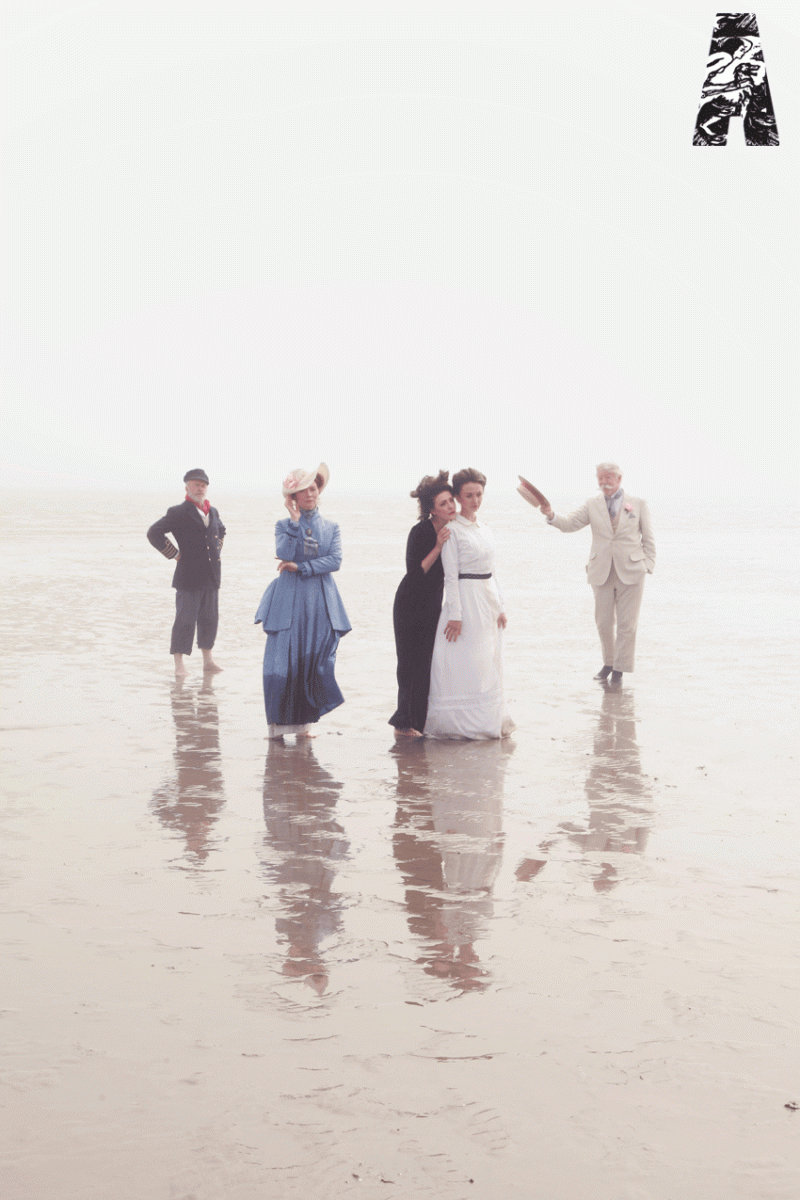Heartbreak House – A Review by NAYD’S Young Critics
In the run up to NAYD’s Young Critics Panel on Oct 5th as part of the Dublin Theatre Festival, we continue to publish a series of reviews from the Young Critics.
Over the summer months,we asked the Young Critics to attend some shows on their own. We asked them to make a short vlog review of their experience. We then asked a selection of them to turn these into written reviews. Dr. Karen Fricker offered some editorial advice.
So with less than a week to go to the Young Critic’s Panel, Catriona Quigley reviews Heartbreak House
Heartbreak House by George Bernard Shaw, directed by Roisin McBrinn
Performed by Lisa Dwyer Hogg, Nick Dunning, Kathy Kiera Clarke, Brendan Conroy, Marcus Lamb, Mark Lambert, Aislin McGuckin, Chris McHallem, Don Wycherley, and Barbara Brennan
Sets by Alyson Cummins, lighting by Paul Keogan, Costumes by Niamh Lunny, music and sound design by Philip Stewart
Viewed on August 21st 2014 at the Abbey Theatre
Reviewed by Caitriona Quigley
Heartbreak House: the name seems to imply anything but good-naturedness. At the same time, though, period dramas bring guilty pleasure for many, particularly now that Downton Abbey is so popular. And I’ve never studied George Bernard Shaw at all. Given all this, it was hard to know what to expect from the Abbey’s production – but I found myself sitting transfixed.
Shaw set his scene in 1914, just before the outbreak of the First World War, ensuring a plenitude of satirical jabs at the expense of the affluent upper classes who confined themselves to their trivial problems as the world changed around them.

Mark Lambert (Captain Shotover), Aislín McGuckin (Lady Ariadne Utterword), Kathy Kiera Clarke (Hesione Hushabye), Lisa Dwyer Hogg (Ellie Dunn) and Nick Dunning (Hector Hushabye) in Heartbreak House by Bernard Shaw, directed by Róisín McBrinn. Photo by Sarah Doyle.
The play concerns a colourful cast of characters who congregate for a country weekend at the dwelling of the surly yet outspoken Captain Shotover, played with appropriate gusto by Mark Lambert. Shotover has been estranged from his younger daughter Ariadne (Aislin McGuckin) for 23 years — yet she seethes when both the Captain and her eccentric sister Hesione (Kathy Keira Clarke) fail to recognize her. Hesione, meanwhile, has invited her friend, Ellie Dunn (the excellent Lisa Dwyer Hogg) to stay for the weekend. When Ellie arrives with her father and her fiancé in tow, she reveals that she’s had her head turned by a mysterious man, who as it transpires, may be a little too familiar to some of the guests…
I admired how Shaw deconstructs various archetypes often found in period dramas, such as the naïve young maiden, the crotchety patriarch, and the well-meaning best friend. The play’s central theme is deceit, and no character ended up to be as they appeared at the play’s outset. The characters and the audience are simultaneously strung along by this deceit, which paves the way for a literally explosive conclusion!

Aislín McGuckin (Lady Ariadne Utterword), Nick Dunning (Hector Hushabye) and Mark Lambert (Captain Shotover) in Heartbreak House by Bernard Shaw, directed by Róisín McBrinn. Photo by Sarah Doyle.
Heartbreak House, is, at times, an incredibly complex production to follow. I can’t count how many times my mum and I exchanged expressions of confusion about how the plot swerved in many directions, often with no prior warning. Yet, the dazzling set by Alyson Cummins, the actors’ impeccable comic timing and exquisite costumes by Niamh Lunny ensure that this production is, at its best, a genuinely enticing piece of theatre.
In conclusion, we found that Shaw’s razor-sharp wit and jovial banter made for insightful and pleasant viewing. Very highly recommended!
Catriona Quigley is a member of M.A.D Youth Theatre, Dundalk and an NAYD Young Critic for 2014



